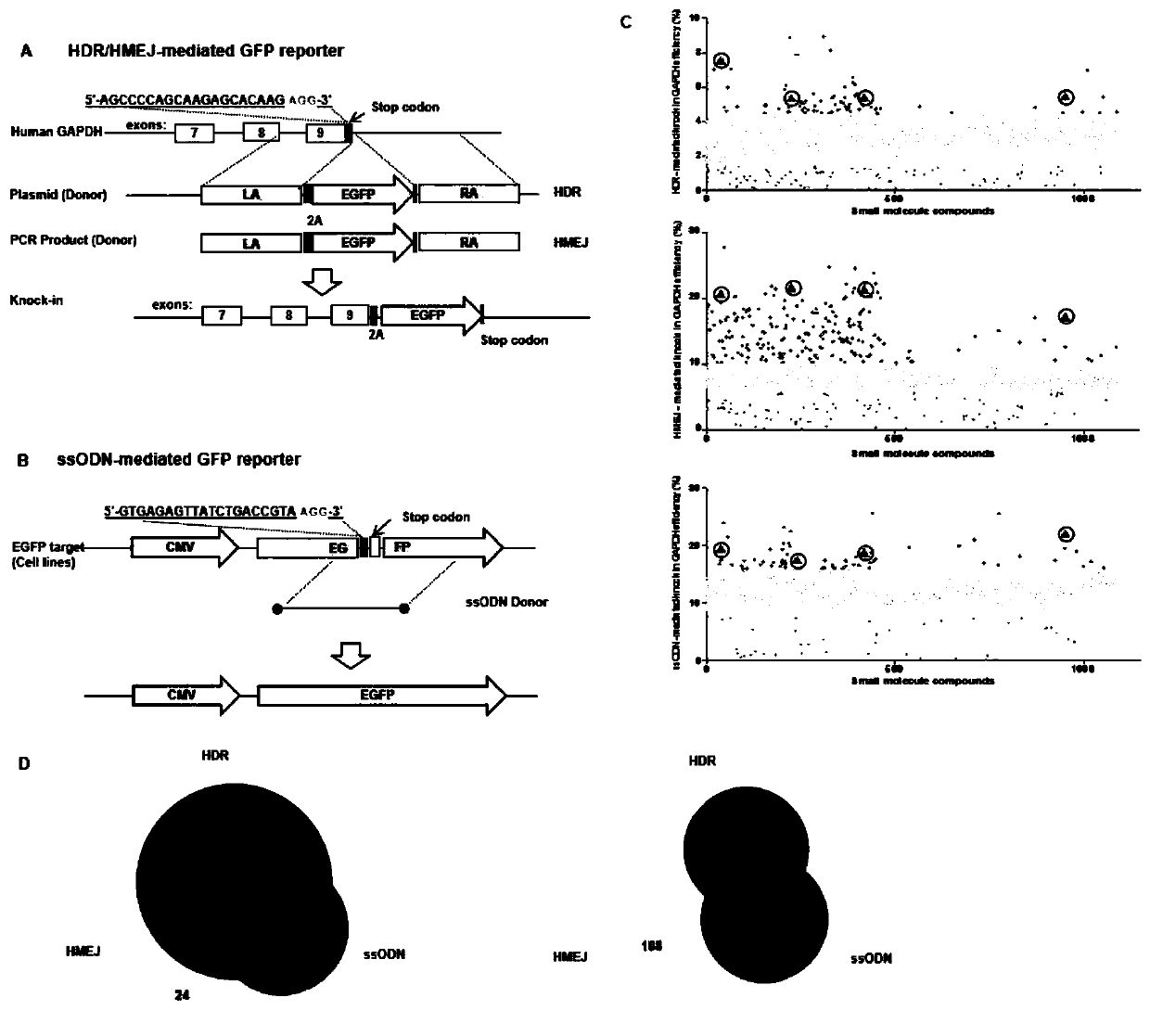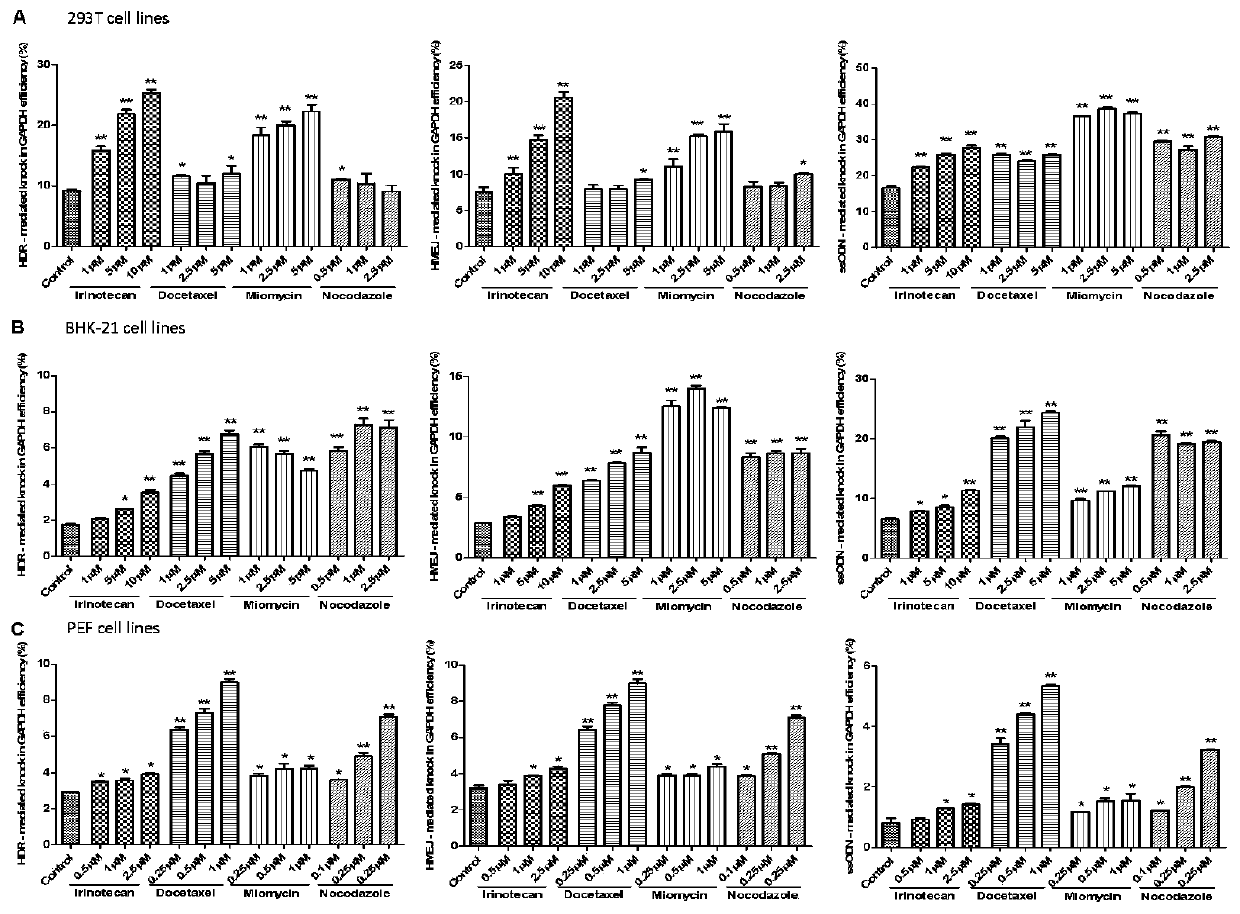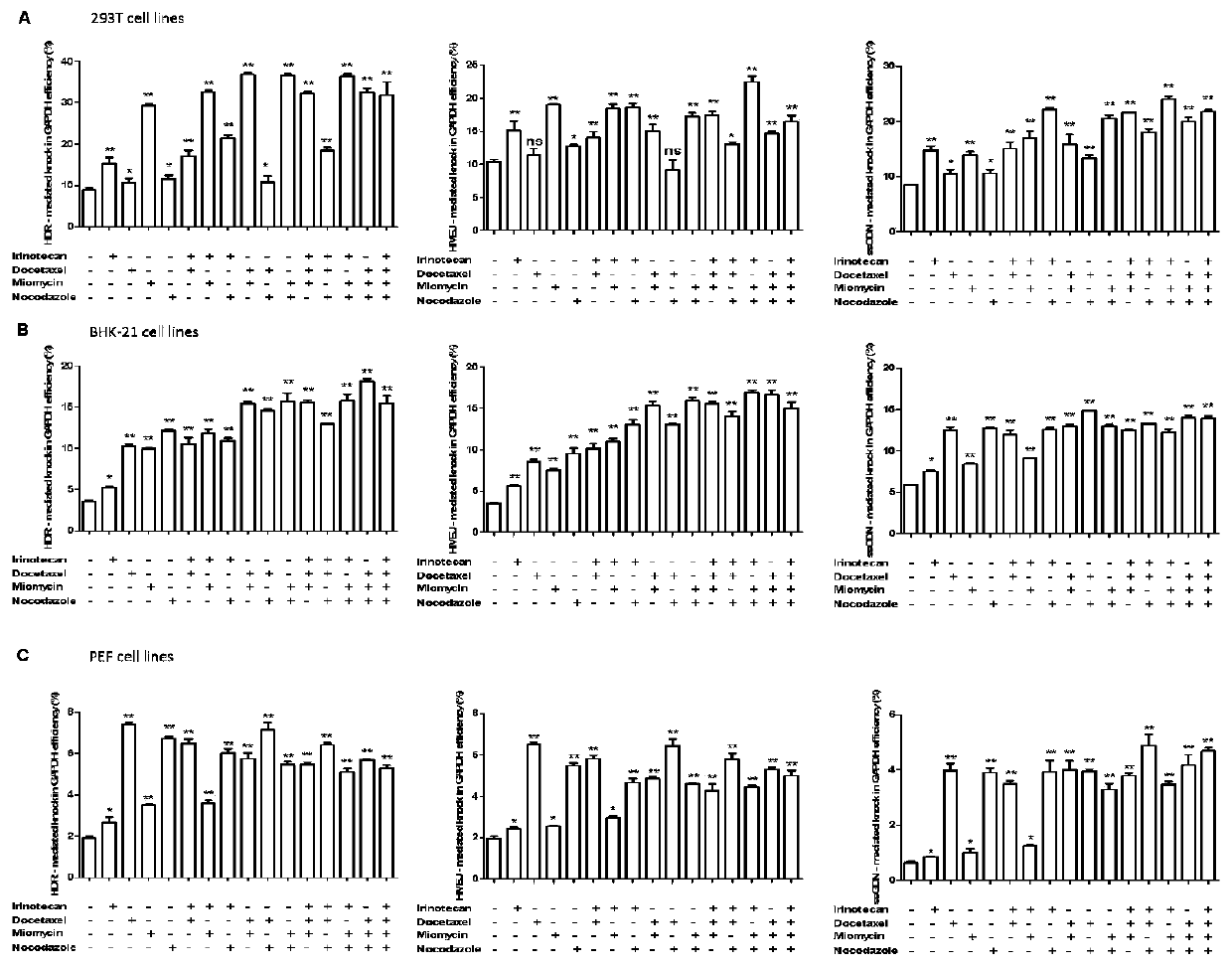Method for improving efficiency of genome site-directed modification by using small molecular compounds
A technology of small molecule compounds and genome targeting, applied in the field of genetic engineering, can solve the problem of low efficiency of genome targeting modification
- Summary
- Abstract
- Description
- Claims
- Application Information
AI Technical Summary
Problems solved by technology
Method used
Image
Examples
Embodiment 1
[0031] Example 1: Screening of small molecular compounds that improve the efficiency of genome-specific modification
[0032] 1 vector construction
[0033] 1.1 Gene synthesis of green fluorescent protein (GFP) reporter carrier
[0034] The GAPDH-GFP reporter gene was synthesized by Nanjing GenScript Biotechnology Co., Ltd., as follows: figure 1 As shown in A, the GAPDH-GFP reporter carrier model diagram: After CRISPR / Cas9 cuts the GAPDH gene to generate DSB, the cells use the donor GAPDH-T2A-GFP plasmid or the donor GAPDH-T2A-GFPCR product template to undergo HDR repair or NHEJ repair, if If homologous repair occurs, the tandem green fluorescent protein gene can be expressed, if no homologous repair occurs, there will be no fluorescent protein; figure 1 Shown in B, ssODN-GFP reporter carrier model diagram: a CRISPR / Cas9-ROSA26 targeting sequence SEQ ID No: 1: 5'-GTGAGAGTTATCTGACCGTAAGG-3' is inserted in the middle of the reporter carrier EGFP sequence. When CRISPR / Cas9 cuts...
Embodiment 2
[0053] Example 2: Using Small Molecular Compounds to Improve the Efficiency of Targeted Genome Modification
[0054] In the embodiment, the specific implementation steps of plasmid construction and extraction, cell recovery and culture, tool cell line screening, and cell transfection refer to steps 1-6 of Example 1.
[0055] Verification of 7 small molecule compounds improving the efficiency of genome-directed modification
[0056] At the same time, the optimal concentrations of 4 candidate small molecule compounds Irinotecan, Docetaxel, Miomycin and Nocodazole for HEK293T (human cells), BHK-21 (mouse cells) and PEF cell lines (pig cells) site-directed insertion efficiency were further verified. After the 24-well plate cells in step 6 were cultured for 12 hours, Irinotecan, Docetaxel, Miomycin or Nocodazole with different concentration gradients were added. After continuing to culture for 48 hours, flow cytometry was used to detect the number of green fluorescent cells and th...
PUM
 Login to View More
Login to View More Abstract
Description
Claims
Application Information
 Login to View More
Login to View More - R&D
- Intellectual Property
- Life Sciences
- Materials
- Tech Scout
- Unparalleled Data Quality
- Higher Quality Content
- 60% Fewer Hallucinations
Browse by: Latest US Patents, China's latest patents, Technical Efficacy Thesaurus, Application Domain, Technology Topic, Popular Technical Reports.
© 2025 PatSnap. All rights reserved.Legal|Privacy policy|Modern Slavery Act Transparency Statement|Sitemap|About US| Contact US: help@patsnap.com



